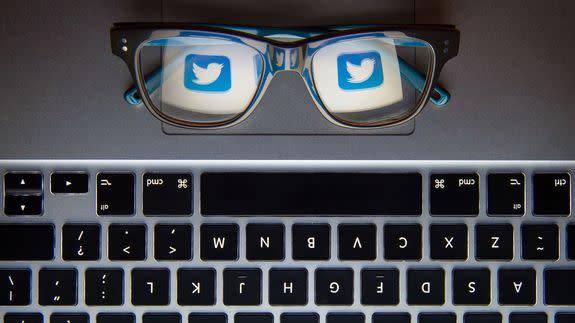Have we reached peak Twitter trolling?

The numbers look grim.
Data analyzing how the social media site Twitter is used for abusive online behavior, or trolling — in internet parlance — does not paint a pretty picture.
The company may have lost potential buyers because of its very real problem with trolls. Bloomberg reported the reason Walt Disney decided against offering a bid to buy Twitter was due to the platform's bullying and hateful communication.
SEE ALSO: How can Twitter solve its troll problem?
The site has attempted to curb the hateful tweets, comments, pictures and attacks, but it has yet to really solve the problem. In July, Twitter rolled out a new block feature that was expected to alleviate some of the issues, but the abuse persists. In August more features that "give you more control over what you see and who you interact with on Twitter" were added.
Starting today, we're making Block easier to help you control your Twitter experience. https://t.co/8pee8rzN1I pic.twitter.com/gCzkTwoglP
— Safety (@safety) June 13, 2016
Dr. Sameer Hinduja, a professor at the School of Criminology and Criminal Justice at Florida Atlantic University and co-director of the Cyberbullying Research Center, told Mashable Twitter trolling feels like it's on the rise, but most research shows the rate of cyberbullying across all platforms has held pretty steady.
However, a lot of the abuse continues on Twitter because the company's approach to the issue has been nominal and "the threat of detection or apprehension or sanction is very slim," Hinduja said. In particular, he pointed out ethnic minorities, those with disabilities and sexual orientation minorities are often on the receiving end of Twitter hate.
The following charts, some of which were published recently by Digiday, analyzed trolling behavior and found certain groups bear the brunt of Twitter hatred. The charts show misogynistic, anti-semitic and anti-Muslim tweets by the numbers and it is eye-opening.
Just last week the Anti-Defamation League looked through the numbers of anti-Semitic tweets and abuse and found startling results. Jewish journalists (or those assumed to be Jewish) received an uptick in online abuse.

Image: anti-defamation league
British think-tank Demos, meanwhile, studied the online response to Brexit in the UK and tracked xenophobic and anti-Muslim posts. More than 16,000 tweets using a term related to xenophobia or an anti-immigrant attitude were found between June 19 and July 1.

Image: demos
Anti-Muslim sentiment on Twitter is pervasive throughout the world. Demos found 4,123,704 tweets that could be considered anti-Islamic between March 18 and June 30.

Image: DEMOS
In relation to Brexit, there also appeared to be an uptick in Islamophobia on Twitter.

Image: demos
In another study, Brandwatch analyzed negative rhetoric toward women. Over a four-year period, the social media monitoring company found misogynistic insults on Twitter jumped at certain points, but healthier discussions about misogyny also increased, which is somewhat hopeful.
Brandwatch study designer Edward Crook told Mashable out of 19 million tweets analyzed "there still is misogynistic language online," but those instances are being outnumbered by more positive interactions about females.

Image: brandwatch
Looking at the rise of hate groups online, a study released in September from George Washington University looked at the increase of white nationalists on Twitter.
The findings included that white nationalist movements have grown on Twitter by about 600 percent since 2012 and about 300 percent since 2014. That's 6,567 followers of a white nationalist movement in 2014 to 25,406 white nationalists when the study came out at the beginning of September.
New York state licensed psychologist and forensic consultant Michael Nuccitelli told Mashable that the internet troll has evolved over the years.
"Eight to ten years ago, the internet troll would just piss you off and incite you," he said. Now, the "sole purpose is to decimate your online reputation." Look at the Twitter takedown of actress Leslie Jones earlier this year — the racist and misogynistic attacks were so vile even Twitter CEO Jack Dorsey noticed.
I use to wonder why some celebs don't have Twitter accts now I know. You can't be nice and communicate with fans cause people crazy.
— Leslie Jones (@Lesdoggg) July 19, 2016
All this online hate happens to coincide with the presidential election. For the past year and a half it appears Twitter has become the platform of choice to spew abuse. GOP candidate Donald Trump himself is a prolific Twitter user, and some of his posts border on abusive.
The Cyberbullying Research Center found what might be a so-called "Trump effect" trickling down from social media sites to the school yard. A look at reports of U.S. middle-schoolers being bullied appears to have gone up when the presidential race got going in 2015.

Image: Cyberbullying research center
To turn these charts the other direction, Twitter may need to take a tougher approach on trolls. That might entail banning a huge swath of users that actually use the platform. It would be a hard hit, especially for a company hurting for users, but could turn around the company's image and make it a less hostile corner of the internet.
In a statement sent to Mashable Wednesday afternoon, Twitter explained how they are trying to cultivate an open, diverse platform while also keeping user safety in mind.
